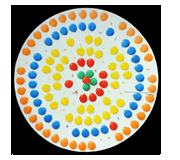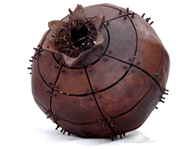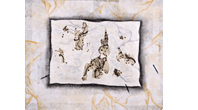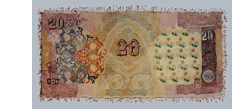- Prelude
- Hard Talk
- New Media
- Rolex : An Overview
- The age of Revivals: Neoclassical Furniture
- Democratization of the Medium No-Budget film: the Indian Context (!)
- Old Sound New Sound
- Decan Odyssey
- North East Opsis
- Russian cool breeze in hot Paris
- Around Kolkata
- Musings from Chennai
- In and around Santiniketan
- In between – from Vadodra
- A Tryst with Art in Madhya Pradesh
- Through the Looking Glass
- The Foreign Connection
- Market Insight
- Market Report
- Artist Index and Statistics
- Auction Reports
- The month that was
- Delhi Dias
- Art Bengaluru
- Mumbai Art Sighting
- Creative Impulse
- Subodh Gupta
- Pooja Iranna
- Preview
- In the News
ART news & views
In between – from Vadodra
Volume: 2 Issue No: 9 Month: 10 Year: 2010
Generation Next
|
In the month of October Kolkata will see the gala opening of GenNext exhibition organized by Aakriti Art Gallery. In this show ten artists out of thirty two are from Vadodara making a significant contribution. The following is a brief. |
 Debashree Das works are about her childhood experience and nostalgia. They are like the toy world trying to enter after they pass the state of childhood. The works are about the unproblematic domain of childhood. Her idiom is naïve which comfortably suits her thematic. They are images of vehicles like toys, also other objects like window, doors, bags which are handled as child's delineation. It is about letting one free from the world to an open space of wonder and play.
Debashree Das works are about her childhood experience and nostalgia. They are like the toy world trying to enter after they pass the state of childhood. The works are about the unproblematic domain of childhood. Her idiom is naïve which comfortably suits her thematic. They are images of vehicles like toys, also other objects like window, doors, bags which are handled as child's delineation. It is about letting one free from the world to an open space of wonder and play.
 Mukthinath Mondal's work comments on the existing conditions of people particularly the rural India. His works draws a lot of imageries from this generally neglected section of the community. He feels his works are between photo realism and documentary realism. But one is tempted to say the photographic effect is well translated on to the canvas often leading to an aesthetic relish of the images more than their commentary. The skillful rendering of this photo referred images along with his memory drawing of instances creates a peculiar mix in his canvases. Often his works are not populated by the people but are about the cultural and social meanings of certain signs from the rural country side.
Mukthinath Mondal's work comments on the existing conditions of people particularly the rural India. His works draws a lot of imageries from this generally neglected section of the community. He feels his works are between photo realism and documentary realism. But one is tempted to say the photographic effect is well translated on to the canvas often leading to an aesthetic relish of the images more than their commentary. The skillful rendering of this photo referred images along with his memory drawing of instances creates a peculiar mix in his canvases. Often his works are not populated by the people but are about the cultural and social meanings of certain signs from the rural country side.
 Prabhakar Alok's mixed media works offers some very interesting possibility with their coexistence of the finished and the processes of a medium. The usage of the zinc plate as a medium/media along side other mediums like serigraphy is significant for generally the zinc plate is used as a ground for the graphic processes and is discarded once the impression is attained on the paper. His usage of the etching/drawing on the zinc plate as part of the finished work can lead to a very interesting aspect of developing his language. In his works one can see an obsessive use of self image. He builds the surface of the canvas by layering it as a tool for enjoying the texturous visuality. Different images are created by overlapping and particularly when seen in black and white with its grey tonalities.
Prabhakar Alok's mixed media works offers some very interesting possibility with their coexistence of the finished and the processes of a medium. The usage of the zinc plate as a medium/media along side other mediums like serigraphy is significant for generally the zinc plate is used as a ground for the graphic processes and is discarded once the impression is attained on the paper. His usage of the etching/drawing on the zinc plate as part of the finished work can lead to a very interesting aspect of developing his language. In his works one can see an obsessive use of self image. He builds the surface of the canvas by layering it as a tool for enjoying the texturous visuality. Different images are created by overlapping and particularly when seen in black and white with its grey tonalities.
 Krupa Makhija's objects are the discarded, rusted and waste objects of the culture. But in the works they are employed more for their formal and compositional necessities than cultural meanings. This gives the images an abstract quality and creates a realm of surrealistic machinations. The x-ray like compositions almost re-infuses a new meaning to the discarded objects in a dialogue within similar objects. This sets a peculiar dynamic in the works often displacing the meanings these images stand for.
Krupa Makhija's objects are the discarded, rusted and waste objects of the culture. But in the works they are employed more for their formal and compositional necessities than cultural meanings. This gives the images an abstract quality and creates a realm of surrealistic machinations. The x-ray like compositions almost re-infuses a new meaning to the discarded objects in a dialogue within similar objects. This sets a peculiar dynamic in the works often displacing the meanings these images stand for.
 Deepak Katri's sculptures are made of the broken pieces of an organic form assembled together to give a different meaning to the form after its assembling. They create a different aesthetic when seen in their final form. These huge organic forms have a surreal appeal but the meaning of these objects gets locked up with the maker.
Deepak Katri's sculptures are made of the broken pieces of an organic form assembled together to give a different meaning to the form after its assembling. They create a different aesthetic when seen in their final form. These huge organic forms have a surreal appeal but the meaning of these objects gets locked up with the maker.
 Soghra Khurasani's large scale compositions comments on various social issues. The question of nationality and the self is often repeated. She also talks about general notions like brave heart, tribute to blood, proud to be an Indian etc. she experiments in different medias which she thinks aptly suits her concerns. She even talks about authority and control.
Soghra Khurasani's large scale compositions comments on various social issues. The question of nationality and the self is often repeated. She also talks about general notions like brave heart, tribute to blood, proud to be an Indian etc. she experiments in different medias which she thinks aptly suits her concerns. She even talks about authority and control.
 Ganesh Urala's humor and fun are part of his language. His themes seem at times very simplistic and his casual attitude reflects the ideas which are part of everyday talk and happenings. Buy using unconventional materials he attempts to poke fun at our normal behaviors.
Ganesh Urala's humor and fun are part of his language. His themes seem at times very simplistic and his casual attitude reflects the ideas which are part of everyday talk and happenings. Buy using unconventional materials he attempts to poke fun at our normal behaviors.
 Riya Chatterjee's use of unconventional materials particularly fabrics, threads etc. are very much part of the feminist art history. She attempts to aesthetically weave in the narrative of pain and pleasure. The twin contrast seems to co-exist despite their opposing characteristics.
Riya Chatterjee's use of unconventional materials particularly fabrics, threads etc. are very much part of the feminist art history. She attempts to aesthetically weave in the narrative of pain and pleasure. The twin contrast seems to co-exist despite their opposing characteristics.
 Shatrugan Takhur uses culturally specific mediums like natural dyes, khadi, and vegetable colours. He sees an alternative in these traditional ways of life to counter consumerist culture of the west he decoratively uses cotton plant as a backdrop. Though he tries to talk about the problems and tragedies of the farming community his visual aesthetic dominates the work making us fixed to the medium. If furthered he can politicize the very medium he uses by bringing in the appropriate context.
Shatrugan Takhur uses culturally specific mediums like natural dyes, khadi, and vegetable colours. He sees an alternative in these traditional ways of life to counter consumerist culture of the west he decoratively uses cotton plant as a backdrop. Though he tries to talk about the problems and tragedies of the farming community his visual aesthetic dominates the work making us fixed to the medium. If furthered he can politicize the very medium he uses by bringing in the appropriate context.
 Buddhadev Mukherjee's works are about alienation. Though he uses varied objects from junkyard they are not politicized in a semiotic play of referents, but are used as strategy to build up the surface for an expressionism which seemingly looks cathartic. His insistent layering refers to his indebtedness to the graphic processes. The overlapping of such layers creates an interesting visual appeal. His visual aesthetic though dominates it talks about the chaos and the estrangement of individuals into claustrophobic spheres.
Buddhadev Mukherjee's works are about alienation. Though he uses varied objects from junkyard they are not politicized in a semiotic play of referents, but are used as strategy to build up the surface for an expressionism which seemingly looks cathartic. His insistent layering refers to his indebtedness to the graphic processes. The overlapping of such layers creates an interesting visual appeal. His visual aesthetic though dominates it talks about the chaos and the estrangement of individuals into claustrophobic spheres.
Artist, Art Critic